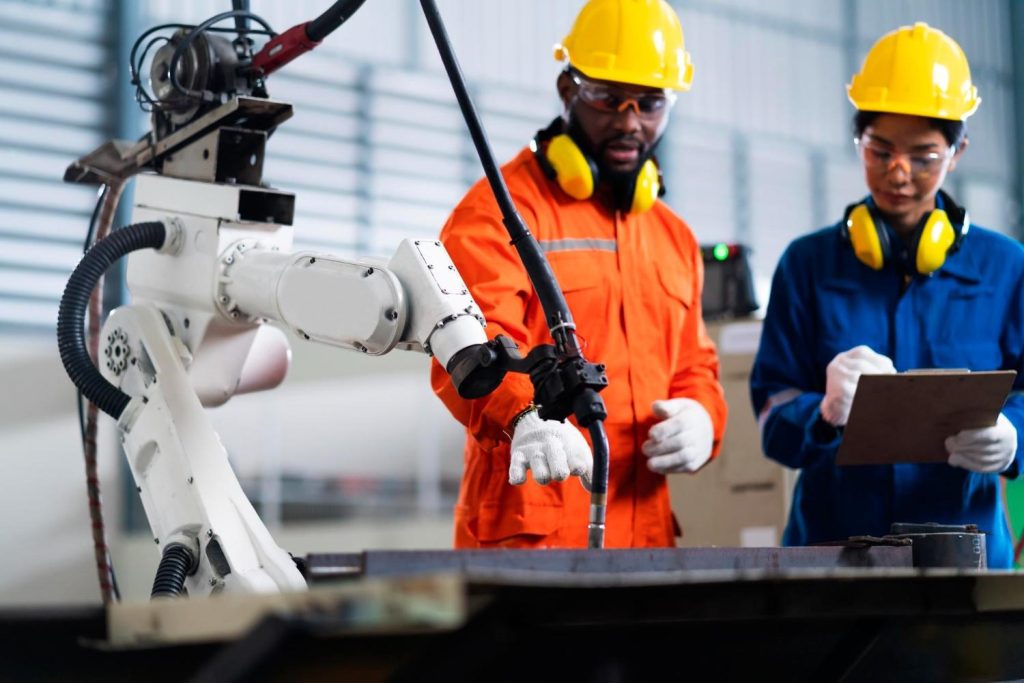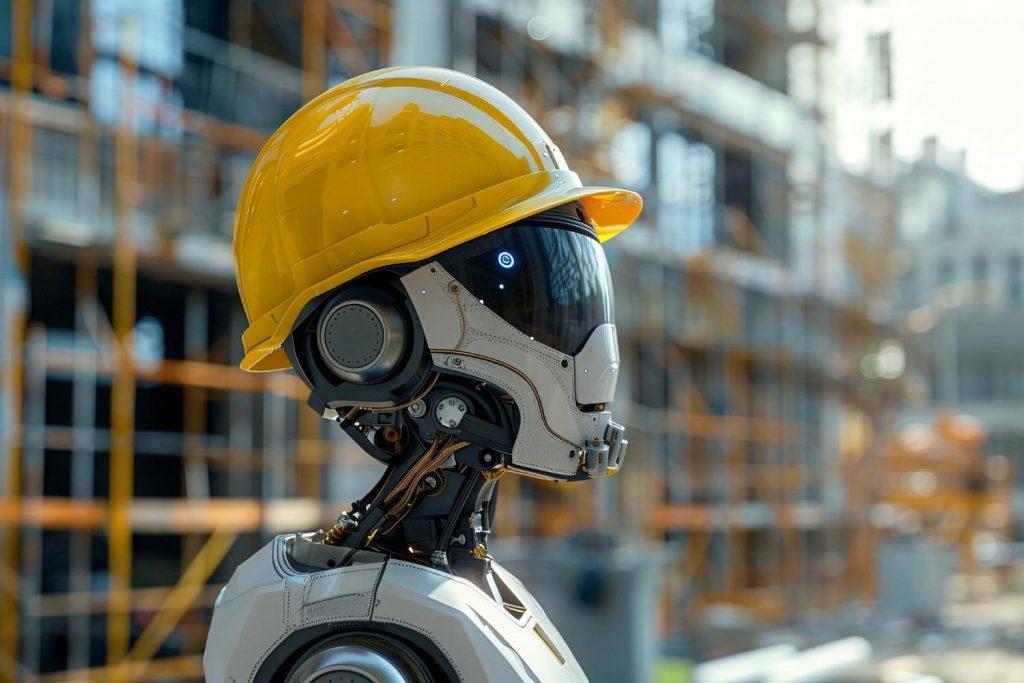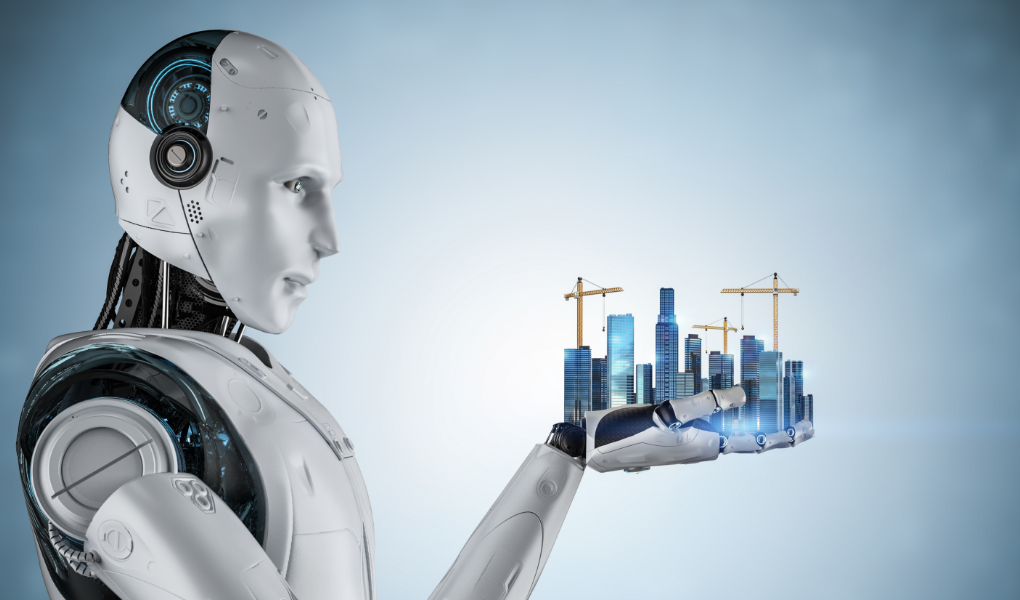What is AI? What is ML?
Artificial Intelligence (AI) and Machine Learning (ML) are often used interchangeably, but they are quite different. While AI encompasses a broader field of creating intelligent systems, ML is a subset of AI, focused specifically on algorithms learning from data to make decisions or predictions autonomously.
Artificial Intelligence (AI) encompasses the development of computers and robots that harness contextual data to provide insights or trigger actions seamlessly, mirroring human cognition and problem-solving. Machine learning (ML) on the other hand is a specialized field within artificial intelligence, dedicated to creating algorithms that enable systems to learn from data and make predictions or decisions without explicit programming. By training on vast datasets, ML algorithms iteratively improve their performance over time, mimicking the learning process of humans.
Significance of AI/ML in various industries
Artificial Intelligence (AI) and Machine Learning (ML) have widespread applications across various industries. In healthcare, ML algorithms analyze medical data to improve diagnosis and treatment outcomes. Finance institutions leverage AI for fraud detection and risk assessment. Manufacturing companies utilize ML for predictive maintenance and production optimization. Retailers employ AI-driven recommendation systems for personalized marketing and inventory management. Even the construction industry is impacted, as we’ll explore further in this article, with AI/ML enhancing project planning, resource allocation, and safety management.
Artificial Intelligence and the Construction Industry
The construction industry faces a wide range of challenges, including project delays and cost overruns, as well as safety concerns and resource inefficiencies. One of the most significant challenges is the unpredictability of project timelines due to factors such as weather conditions, supply chain disruptions, and unexpected site issues. This unpredictability frequently causes delays and increased costs, affecting project stakeholders and overall productivity. Furthermore, ensuring safety on construction sites is an ongoing concern, with accidents endangering both workers and project timelines.
AI and ML technologies can help construction companies predict project timelines, improve safety on construction sites, and optimize resource allocation processes. By utilizing historical data, environmental factors, and real-time inputs, these technologies create predictive models that anticipate potential delays and allow for proactive risk management strategies. AI-powered solutions also monitor worker activities and detect hazards in real time, enabling immediate intervention to avoid accidents. Overall, integrating AI/ML technologies can lead to more resilient and sustainable infrastructure development in the construction industry. Now let’s explore how we can use these technologies in construction.

Applications of AI/ML in the construction process
A recent study by McKinsey & Company found that construction companies using AI in procurement can achieve a significant 10-20% reduction in costs. This efficiency boost comes from several AI/ML applications. These applications can be categorized into the various stages in the construction process thus:
Planning and Design
AI/ML plays a significant role in improving predictive site selection and modeling for construction projects. These models and algorithms can analyze vast amounts of geospatial data, be trained on historical data to predict project costs and timelines with greater accuracy and predict any accessibility or sustainability issues with a particular site. Artificial Intelligence/Machine learning are revolutionizing BIM Design. We could use AI to suggest layouts for optimal efficiency. ML generates a wider range of design options using pre-existing data. For example, Skanska, a construction giant, used AI to design a hospital with optimized room layouts and improved patient flow.
Procurement and Material Management
To detect purchasing trends and forecast future material requirements, machine learning algorithms can examine historical purchase data. This makes it possible to manage inventories more effectively and lowers the possibility of stockouts or wasted materials from excess supply. Furthermore, by evaluating bids and past performance data, AI-powered solutions can automate the process of selecting suppliers, guaranteeing that the best price is paid for necessary materials. AI can be used to predict equipment maintenance needs based on sensor data, preventing costly breakdowns and delays. By optimizing material flow and equipment health, AI ensures construction projects have the resources they need, when they need them, leading to smoother operations and improved project timelines.
Construction
Artificial intelligence can also be used in construction to reduce delays, increase resource efficiency, ensure safety, and improve quality. Machine learning can be used to analyze historical data and identify potential delays and bottlenecks. Artificial intelligence is also useful for risk management and real-time progress tracking. Artificial intelligence could also be used to assess various factors to optimize resource allocation, reduce waste, and cut building costs. Another cutting-edge AI-powered technology that allows for real-time identification of potential hazards is hazard detection. Automated video analysis and wearable sensor technology on construction sites improve this. AI/ML systems can support continuous improvement in output quality and ensure consistent quality across projects by collecting feedback from construction activities, evaluating performance data, and updating models and processes as needed.
Operations and Maintenance
AI/ML can enhance construction operations by automating repetitive tasks, improving asset management, and enabling predictive maintenance. It can anticipate equipment failures, streamline procurement, inventory, and resource allocation, and automate repetitive tasks, allowing staff to focus on strategic tasks. This technology promises streamlined processes and increased productivity. The efficiency of smart homes is heavily reliant on AI-powered systems which enable our homes to mimic human intelligence and perform certain operations without supervision.

Challenges of application and future trends
Artificial Intelligence and Machine Learning (AI/ML) are being used more and more in Nigeria’s construction industry to increase output, efficiency, and project results. But there are obstacles as well, such as a lackluster infrastructure, poor data quality, a regulatory framework, financial limitations, and a skills gap. In remote regions, inconsistent data collection procedures and low-quality data may make it more difficult to create reliable predictive models. Uncertain compliance requirements and regulatory frameworks could also be obstacles to the adoption of AI and ML. However, because of the government’s emphasis on the development of smart infrastructure, there are encouraging future trends in the application of AI/ML in Nigeria. To overcome obstacles and spur innovation in AI/ML applications, cooperation between construction companies, technology providers, research institutes, and government agencies is crucial.
Conclusion
AI and ML are powerful tools that are increasingly being used in the construction industry to address challenges such as project delays, cost overruns, safety concerns, and resource inefficiencies. AI/ML can be applied at the various stages of construction to increase productivity and produce better results. With proper planning and implementation, AI and ML can revolutionize the construction industry, making it more efficient, safe, and sustainable.

